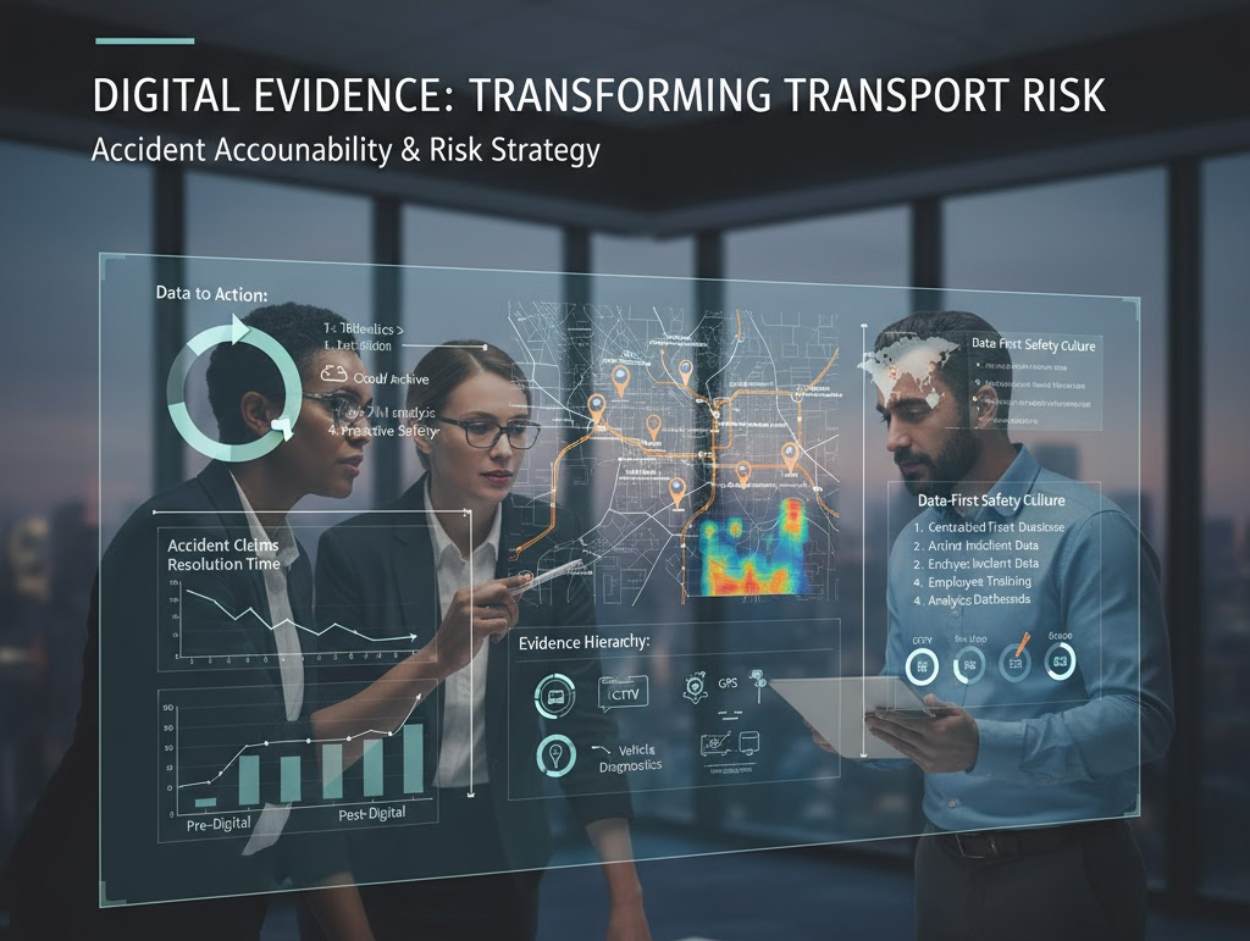How Digital Evidence is Transforming Accident Accountability and Risk Strategy in Public Transport

The development of digital infrastructure has transformed cities into a sprawling network of disconnected areas, shifting away from the limited scope of traditional transportation networks and mobility services. Bus operators are no longer merely running cars and routes; they are, in fact, data ecologies. Each path, movement, maintenance, and vehicle status point generates information that enhances operating efficiency and safety. The strategic use of digital evidence is taking center stage in the response to accidents, as well as in the legal and financial risk management of an organisation in this environment.
Whenever a bus incident occurs, the first thought of any operator is to determine the cause and establish responsibility. The conventional approaches were based on oral testimonies, physical examination, and paper reports. Nonetheless, the current fleets generate constant data flows with telematics devices, CCTV cameras, GPS location, and automated maintenance records. Such tools have completely transformed the way the investigation and claim settlement process takes place. The change has enhanced the level of accuracy and transparency, as road traffic accident claims are based on this evidence to recreate the events reliably and fairly.
New Role of Data in Risk and Liability
- Liability is not only a legal concept, but also a quantifiable operational result for transportation organisations. It is necessary to prove that the company realized its duty of care, which should be documented. There is a set of digital systems that automatically document the vehicle’s presence on time, whether the driver has undergone the necessary training, and whether the routing was organized to minimize fatigue and exposure to risks. This implies that in the event of an incident, the companies would be in a position to provide verifiable evidence, rather than relying on statements or recollections.
- The outcome is that there are more defensible positions when filing an insurance claim, less legal antagonism, and a shorter resolution process. There is also a growing expectation among insurers that transport operators have digital evidence systems in place; in reality, good documentation can have a positive impact on premium calculation and risk rating.
Operational Benefits Beyond Claims
- Digital evidence holds significantly more value than legal and insurance issues. Data analytics helps companies identify trends related to safety, optimize fleet performance, and enhance driver coaching systems. For example, telematics may indicate a tendency toward rough braking or over-speeding on a particular route. When a trend is over, the drivers may be associated with pressure in scheduling or road infrastructure. In the case of an isolated pattern, individual driver training can be used.
- Likewise, digital diagnostics can be used to predict mechanical wear and prevent breakdowns or accidents. This not only reduces risk but also enhances uptime and cost efficiency.
Creating a Data-First Safety Culture

To successfully utilise digital evidence, transport operators should incorporate data processes into their daily work. This includes:
- Managing a centralised fleet database.
- Archiving video and telematics information post incidents.
- Educating employees on how to report events at all times and in the most accurate manner.
- Checking the use of analytics dashboards regularly to identify the early warning signs.
As soon as data is incorporated into an organisation’s culture, not only as a tool when something has gone wrong, safety performance is enhanced proactively.
Conclusion
In the current transportation environment, digital evidence has become more than an element of regulatory compliance; it is a fundamental tool of operation. Those organisations investing in integrated fleet intelligence systems, data governance, and proactive safety analytics will not only mitigate the risk of liability but will enhance efficiency, trust, and their resilience in the long term of the public mobility sector.
Disclaimer
The information provided in this article is for informational and educational purposes only and does not constitute legal, financial, or professional advice. Readers should seek independent guidance from qualified professionals regarding specific legal or insurance matters related to accident liability or risk management. While every effort has been made to ensure the accuracy of the content, the author and publisher assume no responsibility for any loss, damage, or actions taken based on the information provided here.
